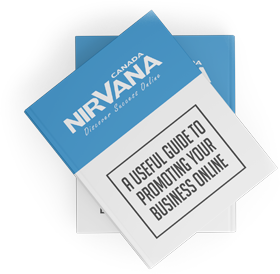Categories
- AngularJS Development
- Awards
- Business
- Content Marketing
- Digital Marketing
- Ecommerce Development
- Email Marketing
- Magento
- Microsoft 365
- Mobile App Development
- Mobile Optimization
- MongoDB
- Node.js
- Online Marketing
- Search Engine Optimization
- Shopify
- Social Media Marketing
- Web Development
- Website Design
- Website Maintenance
- WordPress Websites

Download Our Digital Marketing Ebook
Download Our Digital Marketing Ebook
The topic of cyber security has been an important issue and will always remain a hot topic for as long as the Internet lives on. Given the nature of the Internet, being both open and global, online sites and information will always be faced with security threats and vulnerabilities, but there are security best practices which can be set in place to protect your data and those of your consumers.
As one of the most popular CMS platforms available on today’s market, WordPress tends to be a popular target for malicious cyber hackers. Thankfully there are a number of robust security plug-ins offered by WordPress to help protect your business website. Along with security plug-ins, WordPress recommends a number of different security best practices that should be implemented.
Here are 5 security best practices that should help keep your site safe:
1. Eliminate “Admin” As A Username
Cyber hackers will always make an attempt to attack the admin username and password of a site so it’s always a good idea to remove admin as a user and re-create a new user altogether, using a unique username and password.
2. Place A Limit On Login Attempts
A particular area on a WordPress site that faces vulnerabilities is the website login form. Limiting the number of login attempts can be effective in fighting off brute force attacks. Protecting your login form can be achieved through the use of a security WordPress plug-in named BruteProtect. This plug-in will essentially protect your website from brute force attacks coming from IP addresses that are attempting to login repeatedly.
3. Conduct Proper Testing Of Free Plug-Ins And Themes
It’s important to take the necessary time and steps to conduct extensive testing of free plug-ins and themes on a test server in order to identify potential security vulnerabilities. Many free plug-ins, etc. are developed because they are both interesting and fun, but are not necessarily secure against malicious activities on the Internet.
4. Keep Security Software Up To Date
While this may seem obvious, keeping security software up to date with the latest patches isn’t always done by site owners. Some people believe installing patches will essentially break something along the way, causing more harm than good, or they simply haven’t made time to conduct the updates.
5. Have Secure Hosting
There isn’t much point in having a secure website if its hosting platform is plagued with security vulnerabilities. Secure hosting should incorporate a top-notch firewall, an intrusion detection system and support for the latest MySQL and PHP.

